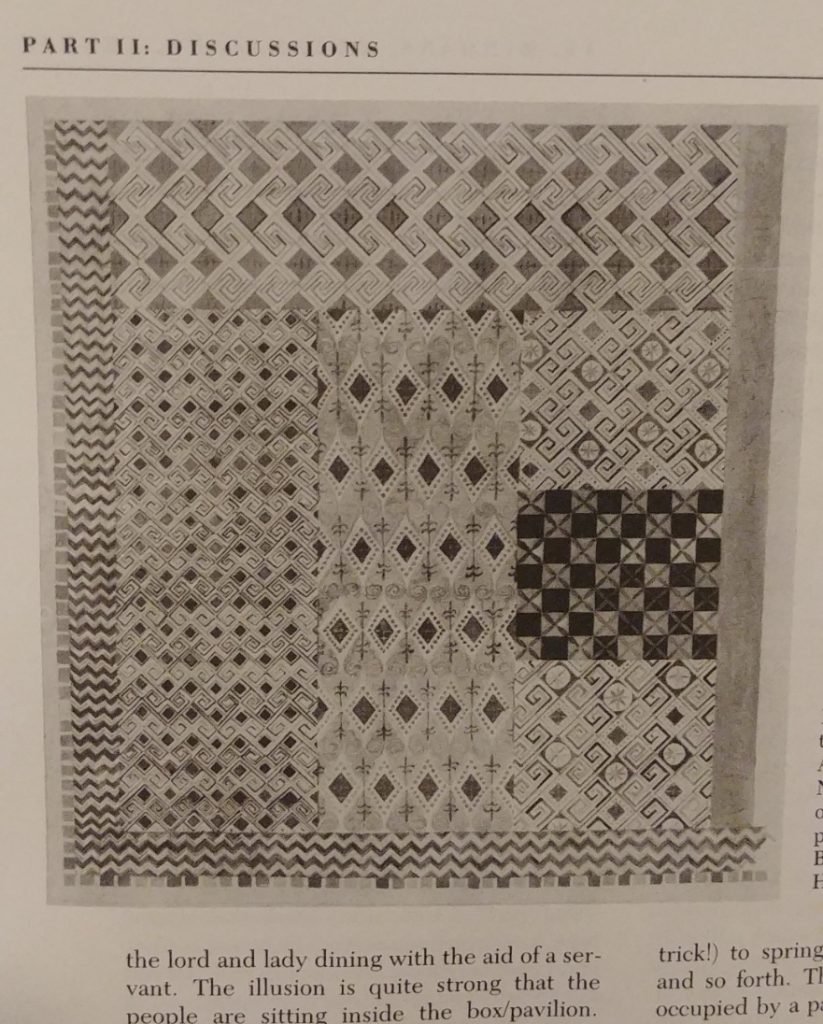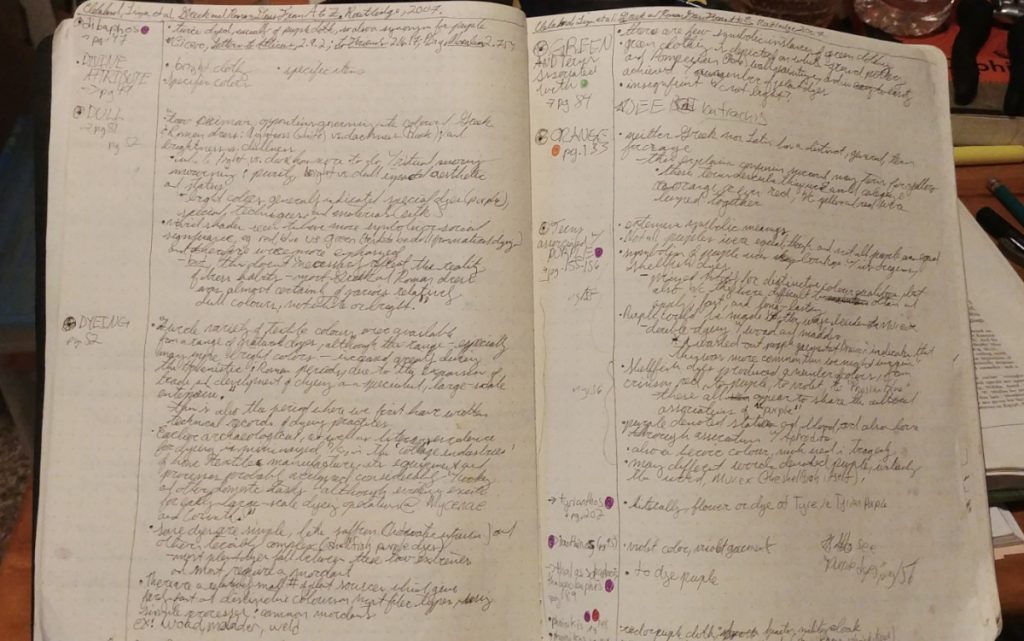I started to catch up my weekly posts in week seven. My depression has not done me any favors in terms of school work, but I started getting treatment again for it this week (side note: it’s helping!). I realize it may be weird to discussion my mental health issues in my ePortfolio, but I believe it’s relevant to how I approach my work, and I also try to be very open about this subject in order to alleviate the stigma around mental health.
Anyways, I did some more spinning and reading. I got lost down a bit of a rabbit hole in Prehistoric Textiles about weaving patterns and textile motifs possibly being the inspiration for many of the patterns painted on pottery. It did hurt my head a little, but I love that people have actually studied such niche things (the author, Barber, was talking about how the patterns that were perhaps woven onto Minoan textiles were used for decorating the walls of ancient Egyptian tombs). I’m unsure if I’ll weave any patterns onto my chiton – it’s going to be a whole ordeal warping the floor loom, as I’ve never done that before.

I also read the majority of Greek and Roman Dress From A To Z. Though, saying I “read” the whole thing is slightly misleading: I skimmed it for any and all words dealing with color and dyeing and took notes on those parts. It was interesting and it led to me to look into the etymology for indikòn, the Greek word for indigo. I wanted to know in what period did indigo started being used in ancient Greece, and I figured that if I could find out the earliest usage of the word indikòn, that might give me a good idea (or at least allow me to make an educated guess). Spoiler: the earliest usage was the first century CE, so the earliest period was probably the Hellenistic period, which is a bit later than the periods I’ve been trying to limit myself to studying. I’m so grateful for having friends who have degrees in Classics – without them I wouldn’t have been able to figure this out on my own.
This is also the week where I started noticing how much by body ached from spinning so much. My legs are constantly treadling my spinning wheel. Even though the treadling isn’t as intensive as being on an exercise bike, over time the repeated use of the same muscles day in and day out takes a toll. Luckily, I can take a break for a few days but I wonder about people in the past who couldn’t take a break, who needed to spin every day otherwise there would be no clothes or linens. I wonder about how much they ached or if they became used to it after a while. Perhaps, as they probably started spinning in childhood, they never ached all that much. I do not know and I wish I had a time machine so I could ask the spinners of the past myself.
